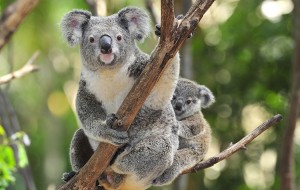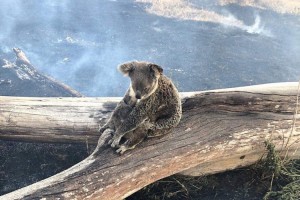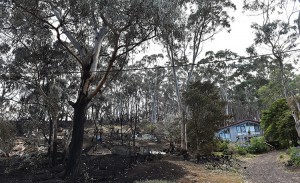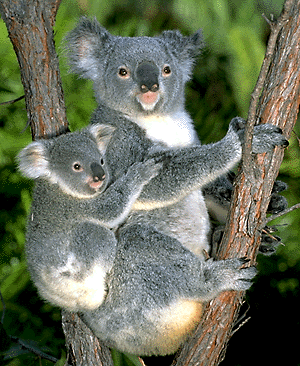Koala Counting Time
Monday, December 28th, 2020
A koala mother and her joey (young) rest in a eucalyptus tree. Eucalyptus leaves and shoots make up the main part of a koala’s diet.
© Shutterstock
It’s summer in Australia, so you know what that means—time for a koala count! The Australian government has funded a project to count the population of the beloved teddy-bearlike mammals, as well as record where the marsupials (pouched mammals) live. The government commissioned this project because, in recent years, estimates of the koala population have varied greatly. In 2016, for instance, there were an estimated 300,000 koalas in Australia. Three years later, that number was down to 80,000, with some scientists saying the number was as low as 43,000.
In previous counts, people merely counted how many koalas they saw. But, koalas spend almost all their time in eucalyptus trees, making it difficult for people to spot them among the leaves. For the new count, humans will still venture into the forests to search for koalas. But, to ensure a koala-ty count, the government has also introduced some new methods. It will employ heat-seeking drones. A drone is an aircraft designed to operate without a pilot on board. The drones will detect the body heat that a koala gives off. The government will also use dropping-detection dogs—that is, dogs that identify koala droppings. The droppings serve as evidence that koalas live in the area. In addition to detecting droppings, these dogs can sniff out koalas themselves.
In recent years, the koala population has declined. People have cut down eucalyptus forests for housing developments, resorts, and farmland. In addition to spending most of their time in the forks of eucalyptus trees, koalas eat mainly the leaves and young shoots of eucalyptuses. They even get most of the water they need from eucalyptus leaves. Koalas are also vulnerable to natural disasters. Tens of thousands of koalas were killed when bushfires devastated large areas of Australia in late 2019 and early 2020. In fact, a study by the World Wildlife Fund (WWF) estimated that more than 60,000 koalas had been either killed, injured, or displaced by the fires. This staggering number led some scientists to say that the animal was “functionally extinct.”
There are efforts to increase the koala population in Australia. For instance, the WWF hopes to use drones to drop eucalyptus-tree seeds in forests. The WWF will also create a fund to sponsor koala sanctuaries (safe spaces).





